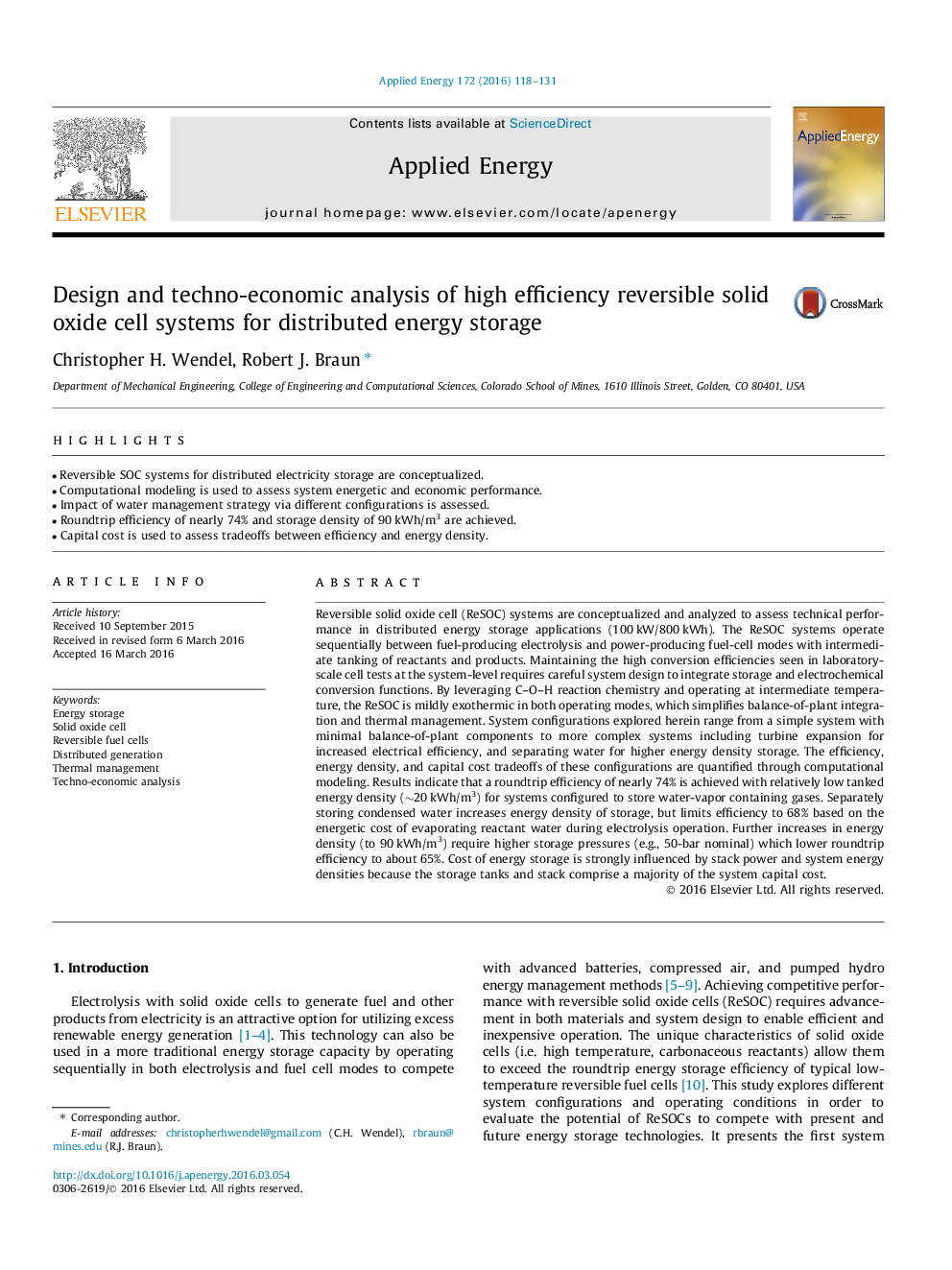| کد مقاله | کد نشریه | سال انتشار | مقاله انگلیسی | نسخه تمام متن |
|---|---|---|---|---|
| 6683233 | 501855 | 2016 | 14 صفحه PDF | دانلود رایگان |
عنوان انگلیسی مقاله ISI
Design and techno-economic analysis of high efficiency reversible solid oxide cell systems for distributed energy storage
ترجمه فارسی عنوان
طراحی و تجزیه و تحلیل فنی و اقتصادی راندمان بالا سلول های اکسید جامد برای ذخیره انرژی توزیع شده
دانلود مقاله + سفارش ترجمه
دانلود مقاله ISI انگلیسی
رایگان برای ایرانیان
کلمات کلیدی
ذخیره انرژی، سلول اکسید جامد، سلول های سوخت برگشت پذیر، نسل توزیع شده، مدیریت حرارتی، تجزیه و تحلیل تکنولوژیکی و اقتصادی،
موضوعات مرتبط
مهندسی و علوم پایه
مهندسی انرژی
مهندسی انرژی و فناوری های برق
چکیده انگلیسی
Reversible solid oxide cell (ReSOC) systems are conceptualized and analyzed to assess technical performance in distributed energy storage applications (100Â kW/800Â kWh). The ReSOC systems operate sequentially between fuel-producing electrolysis and power-producing fuel-cell modes with intermediate tanking of reactants and products. Maintaining the high conversion efficiencies seen in laboratory-scale cell tests at the system-level requires careful system design to integrate storage and electrochemical conversion functions. By leveraging C-O-H reaction chemistry and operating at intermediate temperature, the ReSOC is mildly exothermic in both operating modes, which simplifies balance-of-plant integration and thermal management. System configurations explored herein range from a simple system with minimal balance-of-plant components to more complex systems including turbine expansion for increased electrical efficiency, and separating water for higher energy density storage. The efficiency, energy density, and capital cost tradeoffs of these configurations are quantified through computational modeling. Results indicate that a roundtrip efficiency of nearly 74% is achieved with relatively low tanked energy density (â¼20Â kWh/m3) for systems configured to store water-vapor containing gases. Separately storing condensed water increases energy density of storage, but limits efficiency to 68% based on the energetic cost of evaporating reactant water during electrolysis operation. Further increases in energy density (to 90Â kWh/m3) require higher storage pressures (e.g., 50-bar nominal) which lower roundtrip efficiency to about 65%. Cost of energy storage is strongly influenced by stack power and system energy densities because the storage tanks and stack comprise a majority of the system capital cost.
ناشر
Database: Elsevier - ScienceDirect (ساینس دایرکت)
Journal: Applied Energy - Volume 172, 15 June 2016, Pages 118-131
Journal: Applied Energy - Volume 172, 15 June 2016, Pages 118-131
نویسندگان
Christopher H. Wendel, Robert J. Braun,
